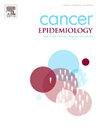Assessing the impact of environmental tobacco smoke on five-year cancer mortality
IF 2.3
3区 医学
Q3 ONCOLOGY
引用次数: 0
Abstract
Background
Environmental tobacco smoke (ETS), also known as passive smoke, is a major public health concern due to its adverse health effects, which are comparable to those of active smoking. Although the risks of ETS for cardiovascular and respiratory outcomes are well documented, less is known about its impact on cancer prognosis. This study evaluated the association between ETS exposure and five-year all-cause mortality among patients diagnosed with breast, colorectal, lung, melanoma, or stomach cancer.
Methods
Clinical data were obtained from the UC San Diego Health system and the UC Health Data Warehouse. The study cohort included 17,729 adult patients with a confirmed cancer diagnosis and no recorded history of active smoking. ETS exposure and five-year mortality were identified using structured electronic health record data. Multivariable exact logistic regression and Cox proportional hazards models were used to estimate the association between ETS exposure and five-year mortality, adjusting for age, sex, cancer type, race, ethnicity, hypertension, hyperlipidemia, and type 2 diabetes.
Results
Among patients with documented ETS exposure, the five-year mortality rate was 86.95 %, compared to 61.69 % among those without ETS exposure. ETS exposure was independently associated with significantly increased odds of five-year mortality (OR = 7.83, 95 % CI: 3.64–5.85, p < 0.001). Lung and stomach cancers were associated with higher mortality risk relative to breast cancer, whereas female sex, colon cancer, melanoma, White race, hypertension, hyperlipidemia, and type 2 diabetes were associated with reduced mortality.
Conclusion
ETS exposure is a significant predictor of five-year mortality among cancer patients with no history of smoking. These findings underscore the need for increased clinical attention and public health efforts to reduce involuntary exposure to tobacco smoke in vulnerable populations.
评估环境烟草烟雾对五年癌症死亡率的影响
环境烟草烟雾(ETS),也被称为被动烟雾,是一个主要的公共卫生问题,因为它对健康的不利影响与主动吸烟相当。虽然ETS对心血管和呼吸系统预后的风险有很好的记录,但对其对癌症预后的影响知之甚少。本研究评估了ETS暴露与乳腺癌、结直肠癌、肺癌、黑色素瘤或胃癌患者5年全因死亡率之间的关系。方法从加州大学圣地亚哥分校卫生系统和加州大学健康数据仓库获取临床数据。该研究队列包括17729名确诊癌症且无吸烟史的成年患者。使用结构化电子健康记录数据确定ETS暴露和5年死亡率。多变量精确logistic回归和Cox比例风险模型用于估计ETS暴露与5年死亡率之间的关系,调整了年龄、性别、癌症类型、种族、民族、高血压、高脂血症和2型糖尿病。结果在有记录的ETS暴露的患者中,5年死亡率为86.95 %,而没有ETS暴露的患者为61.69 %。ETS暴露与5年死亡率显著增加独立相关(OR = 7.83, 95 % CI: 3.64-5.85, p <; 0.001)。与乳腺癌相比,肺癌和胃癌的死亡率较高,而女性、结肠癌、黑色素瘤、白种人、高血压、高脂血症和2型糖尿病的死亡率较低。结论:ets暴露是无吸烟史癌症患者5年死亡率的重要预测因子。这些发现强调需要加强临床关注和公共卫生努力,以减少弱势群体非自愿接触烟草烟雾。
本文章由计算机程序翻译,如有差异,请以英文原文为准。
求助全文
约1分钟内获得全文
求助全文
来源期刊

Cancer Epidemiology
医学-肿瘤学
CiteScore
4.50
自引率
3.80%
发文量
200
审稿时长
39 days
期刊介绍:
Cancer Epidemiology is dedicated to increasing understanding about cancer causes, prevention and control. The scope of the journal embraces all aspects of cancer epidemiology including:
• Descriptive epidemiology
• Studies of risk factors for disease initiation, development and prognosis
• Screening and early detection
• Prevention and control
• Methodological issues
The journal publishes original research articles (full length and short reports), systematic reviews and meta-analyses, editorials, commentaries and letters to the editor commenting on previously published research.
 求助内容:
求助内容: 应助结果提醒方式:
应助结果提醒方式:


